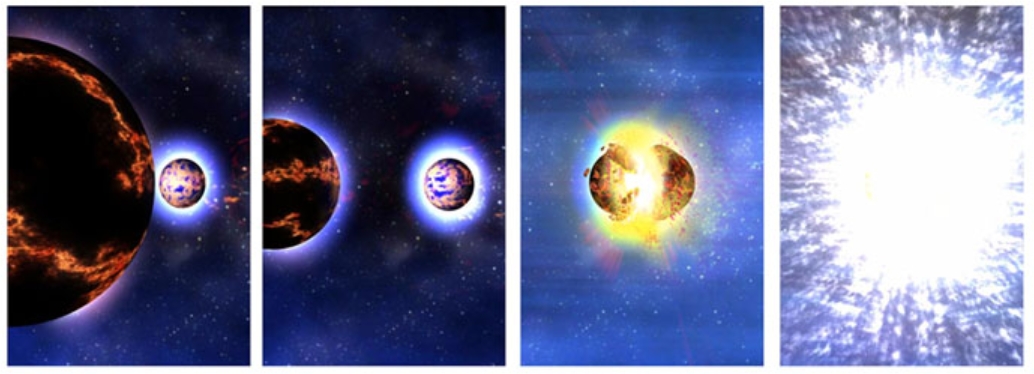
 Credit: NASA/Dana Berry
Credit: NASA/Dana Berry
When Stars Collide
Even as astronomers uncover the
identity of some gamma-ray bursts, a peculiar class of gamma ray bursts has remained a mystery. The mysterious class are those very short bursts. These bursts are difficult to identify because they have timescales of a second or less, so it's very difficult for astronomers to obtain followup observations. Until recently, that is, when the aptly named Swift GRB telescope was able to pinpoint the location of a bright, short burst called GRB 050509b (the second burst on May 9 of this year). Unlike the better studied longer burst, this burst had a very short afterglow, which faded very quickly. Astronomers believe this burst, and probably other short bursts, are produced by a rapid explosion which occurs when one neutron star merges with another neutron star. Such events can occurs in neutron star binaries because of the loss of energy from the system due to gravitational radiation. The sequence of images above is an artist's conception of what the merger of such a system would be like.
Last Week *
HEA Dictionary * Archive
* Search HEAPOW
* Education
Each week the HEASARC
brings you new, exciting and beautiful images from X-ray and Gamma ray
astronomy. Check back each week and be sure to check out the HEAPOW archive!
Page Author: Dr. Michael F. Corcoran
Last modified Tuesday, 27-Feb-2024 10:15:14 EST


